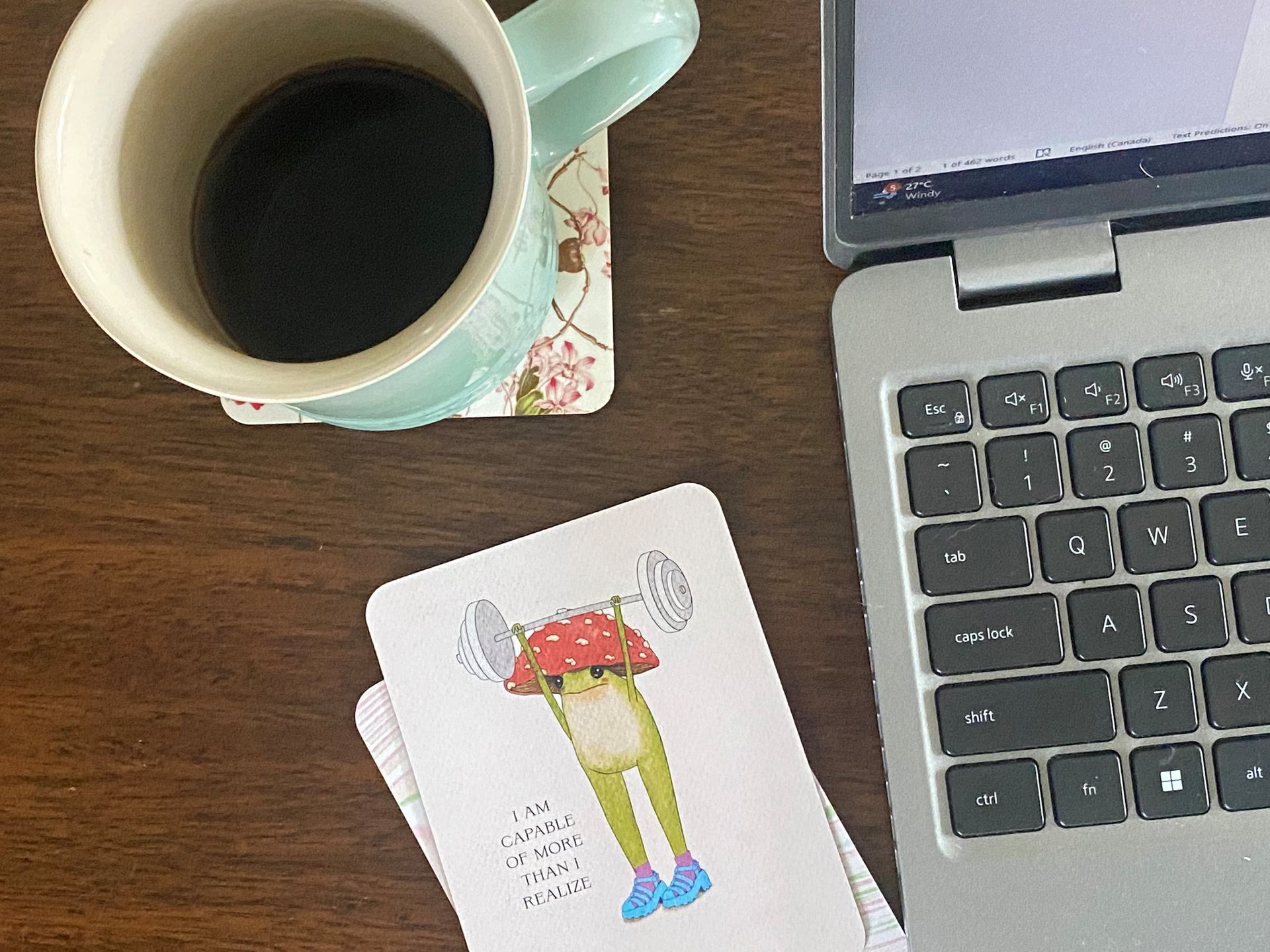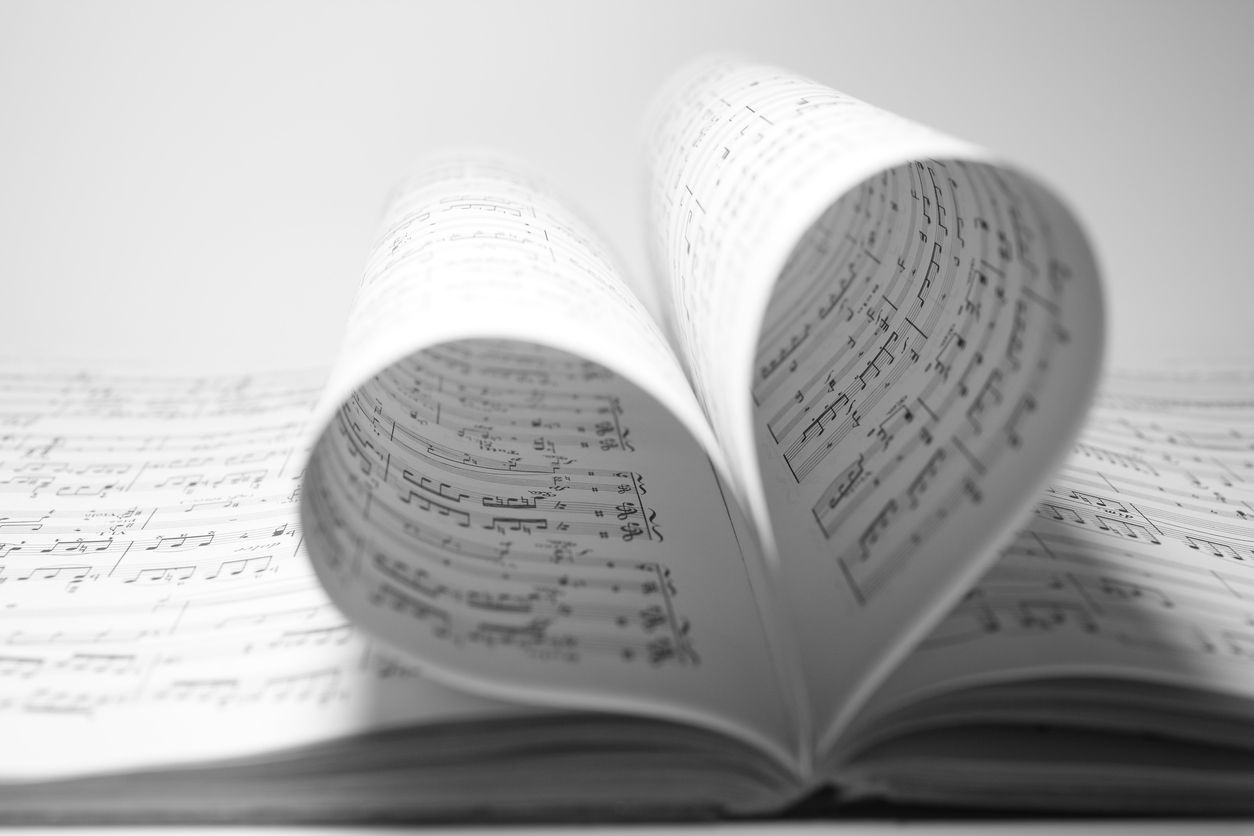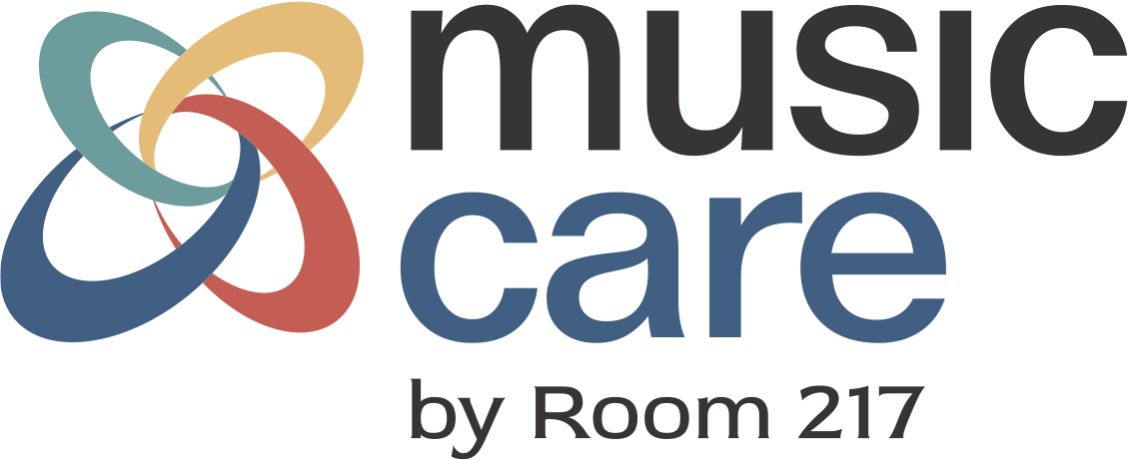Mental Health
MUSIC CARE WEBINARS
Blogs

Early this summer, I had the incredible privilege of seeing my favourite musical artist, James Taylor, in concert. The evening was a birthday gift from my husband, and it was unforgettable. As I listened, I found myself reflecting on why James Taylor has had such a profound influence on my life. I first fell in love with his music in high school, and since then, his iconic voice, heartfelt lyrics, and timeless melodies have been the soundtrack to my emotions. His songs have soothed me in difficult times, given words to feelings I couldn’t otherwise express, lifted me up, and accompanied me in moments of solitude. They’ve inspired connection, nurtured a sense of shared humanity, and encouraged self-compassion. Gratitude runs like a golden thread through much of his work. Obvious examples include How Sweet It Is, You’ve Got a Friend, Carolina in My Mind, and As Easy as Rolling Off a Log, but for me, gratitude is woven into so many of his songs, gratitude for life, for love, for nature, for simply being alive. One might assume, listening to his vast collection, that gratitude came easily to Taylor, that he lived a simple, happy life. But his journey has been far from easy. He’s faced severe mental health challenges, addiction, relationship breakdowns, loss, grief, and loneliness. Perhaps his deep connection to gratitude is part of what helped him persevere and heal. Music, across all genres and eras, has the power to connect us to gratitude. Research on gratitude and wellbeing The effects of gratitude interventions: a systematic review and meta-analysis - PMC shows that cultivating gratitude can be a strong foundation for self-care. A single piece of music can instantly bring us back to a loving relationship, a joyful moment, or a treasured memory. For example, when I hear a Medieval madrigal or Renaissance choral music, I’m filled with love and gratitude for my dad and the passion for music we shared. Music itself is something to be grateful for. Think about the symphonies of Beethoven or the piano concertos of Chopin, the sheer artistry, the vulnerability of musicians creating works that invite us to connect with our own humanity. The alchemy of poetry and melody makes music one of the most powerful art forms for emotional connection. A Music + Gratitude Practice Write down (or think of) three things you’re grateful for. Choose music that helps you connect with those things. Reflect on the types of music you are most grateful for. Send a moment of silent thanks to the artists whose music has touched your life. And if you need a boost, try listening to songs with themes of gratitude, they can be a gentle reminder of the beauty in your life, even on difficult days. Gratitude Playlist for you to Dive into Right Away: Classic & Folk What a Wonderful World – Louis Armstrong Thank You – Dido Count Your Blessings Instead of Sheep – Bing Crosby Give Me Love (Give Me Peace on Earth) – George Harrison Forever Young – Bob Dylan Pop & Soul Thank You for Being a Friend – Andrew Gold / Golden Girls theme Grateful – Rita Ora Sweet Baby James- James Taylor You’ve Got a Friend – Carole King / James Taylor Lovely Day – Bill Withers Your Smiling Face- James Taylor Spiritual & Uplifting Gratitude – Brandon Lake How Sweet It Is (To Be Loved by You) – Marvin Gaye / James Taylor version I Just Called to Say I Love You – Stevie Wonder Blessed – Elton John Shower the People- James Taylor Contemporary & Indie Kind & Generous – Natalie Merchant Thank You – Keith Urban Gratitude – Earth, Wind & Fire

The research is out… and it’s conclusive! You simply cannot sit for long periods of time without getting up to move: your mother has told you; your doctor is telling you, The World Health Organization is advising you, in no uncertain terms; even your smart watch is asking you to get up and move! But are you doing it? Perhaps today’s Music and Wellness Blog will give you the facts and help inspire you to indulge in regular body breaks or “exercise snacks” as they are more commonly being called. Active breaks are not just a nice idea, they are imperative. Research from The University Of British Columbia, Faculty of Medicine The Importance of Movement Breaks - UBC Physical Therapy and Research Clinic found that these short breaks help to reduce the associated risks of a sedentary lifestyle. Even short, simple activities like walking, household chores and gardening can add up to supporting a healthier balanced day. The World Health Organization suggests a 40% increase in mortality is associated with prolonged sitting and recommends short bursts of physical activity. My physiotherapist quips that sitting is the new smoking. When I made the transition from a teaching career that had me up on my feet much more, I felt the difference because now my day often consists of prolonged hours of writing and online meetings. There is a lack of consensus about how long is too long in a sitting position. You may have heard that a break every 20 minutes is advised; that for me feels a little too frequent. I have read that the brain focuses well in 90 minutes cycles and that attention will wane after that stretch of time. So my personal protocol that addresses these issues is this: I choose 30-45 minute work sessions, set a timer or alarm and then ask Alexa to play one of my high motivation tunes to fire up my heart rate. The dogs will watch me dance around the room, jump as high as I can and land in a deep lunge for 10-12 reps, or they may witness one of my favourite activities that is often accompanied by a disco selection, speed cleaning the kitchen. I may alternate throughout the day with a relaxing track. My go-to here is Room 217’s Diverse Sounds Collection where soothing melodies will accompany a pose of the child, my legs up against the wall, or some gentle Tai Chi movements. What is important is that you choose music that is right for you. What music motivates you? Calms you? The more these energizing exercise snacks become part of your daily routine, you will know what your body needs- a bit of workout pop to get you jumping on the spot or a strum of the guitar and solo voice to guide you into a five minute full body stretch. The body break is your practice, and it must work for you to be consistent, from your musical selections to your body’s needs and requirements. Your body will thank you, your overall health and your brain too. Enjoy today’s snack!

You’ve most likely heard about the power of self talk. There are numerous studies that support the use and practice of simply saying kind, motivational or instructional words to yourself. How many of us, however, continue to default into engaging in an unhelpful and critical monologue? I’ve often heard, why would you say something to yourself that you would never consider saying to your friend? Perhaps that is the crux of the problem, before we continue, it is of utmost importance to develop a loving and compassionate relationship with ourselves. If that seems easier said than done then STEP 1: there is a world of mindful self-compassion for you to explore through Dr. Kristin Neff’s The Mindful Self-Compassion (MSC) Program Positive Self Talk has been proven to impact so many aspects of our lives such as sports performance as well as other forms of performance including task completion . Positive Self Talk has also been found to support attentional focus and resilience to distraction . Studies have also shown that it can help to alleviate depression in adolescents and students . It can help with public speaking anxiety and even in helping you beat disease and aid in healing and recovery . The essential messages drilled down: you are important, you matter, you are worth it, so believe in yourself. How is it done, you ask? And how can it involve the use of music? This daily ritual can take as little as 20 seconds a day and can be personalized to be accompanied by the music of your own choice. The technique is simple but has deep and far-reaching benefits: Close your eyes and bring your attention to your breath for at least 3 deep inhalations and exhalations. Recall a recent challenge, obstacle that you have encountered, or self doubt and observe your body’s response. Where can you feel a tightening or discomfort? With one hand on your heart and the other on your belly offer kindness, compassion and visualize how you can offer yourself a helping hand, to be a friend to yourself. Come up with a short phrase to capture how you can make yourself feel loved and supported, perhaps something like, “today was hard, tomorrow will be a better day” or “ I forgive myself”, or maybe, “I am capable of more than I realize”. Now choose a tune, it might even be the earworm that has been going through your mind all day or just a favourite melody that you know well and put the phrase to the tune. Repeat this throughout the day, seeing it as an antidote to the sinking feelings that you are struggling with. This short and beautiful practice can help sustain and fortify you when you are faced with challenges and can become one of the effective practices that you can turn to with a sense of routine or ritual to support your performance, your resilience and your overall wellness.

Music has become for me a bit of a window into my own soul. My playlist for on the way to work enables me to be more grounded in my own beliefs and purpose as I enter into the busyness of my day to day work. Throughout the day snippets of songs come back to me and help me to refocus and also realign with my own values as I work. Sitting at the piano and playing around with melodies and lyrics opens up space in my head and my heart. Creating simple songs allows me to explore my beliefs and emotions and look deeper into my soul, finding places of peace and clarity that spill over into my interactions with family, friends, co-workers and students. Music helps me to slow down, to reflect, and to better understand myself in relation to God and the world around me. In my role as a student support teacher in an elementary school, I often use music with both adults and children. Working in a school is fast-paced with many decisions made on the fly. Teachers experience high levels of decision and compassion fatigue. They care deeply for their students and work hard to meet a wide variety of needs within their classrooms and the schools. One way I have used music is to give space and invitation for staff members to gather together and listen to music as a way to reset, reconnect and regulate during the course of a week. Listening to music has helped people to take time to process their emotions and reconnect with their purpose, giving new strength and courage to continue their important work. Working with students, I use music primarily as we look at social and emotional learning. For example, we have used an original song to help teach students internalize a process of conflict resolution that we are using to help student grow in their independent conflict management skills. Using music to help students regulate their emotions when they are upset has great benefits. This can take a number of different formats. A drumming conversation, ie. back and forth sharing of rhythms, has helped some students who are struggling to talk about what is frustrating them. The process of drumming and focusing on the rhythmic conversation frees their thinking and grows their trust enough that they are able to communicate about their big emotions. Listening to calming music can help when a student is feeling overwhelmed by their emotions. And writing songs about loss and struggle has helped some students cope with difficult situations in their lives. In my life and practice music helps build connection, community and trust allowing for deeper, more meaningful relationships that help to support students and staff learn and grow together in school.

A growing concern among both recreational and clinical staff in long-term care (LTC) is the health and wellness of men in care. Health professionals have long recognized that men, both in and out of care, tend to experience lower overall health profiles compared to women. RESEARCH widely acknowledges that sex and gender intersect with factors like race, ethnicity, socioeconomic status, disability, and age to shape individual health outcomes. Notably, men face unique challenges when it comes to health and wellness. Globally, men are outlived by women in all settings, a phenomenon known as the male– –female health-survival paradox The Male-Female Health-Mortality Paradox | SpringerLink . This disparity highlights the need for gender-specific approaches to healthcare, as men’s health is increasingly recognized as a public health concern. Researchers and policymakers are working to understand the roots of these inequalities, with many pointing to social norms and behaviors formed in adolescence. We are familiar with stereotypes about men engaging in higher-risk activities, from motorcycle riding to nicotine addiction. However, one of the most significant factors affecting men’s health and longevity is their tendency to have fewer and less robust social connections compared to women. Women generally participate in social forums where they express emotions more freely, while men, historically, have been less likely to depend on social groups or engage in regular emotional expression. This can lead to isolation, which negatively impacts both mental and physical health. One promising approach to addressing social isolation among men is through men’s musicking. Music has always provided a way for men to come together—whether through singing, playing instruments, or participating in music listening groups. From male choirs like the Maesteg Choir in Scotland, to garage bands playing for the sheer joy of it, music offers a safe, non-threatening environment for men to gather, share memories, and express emotions, even if only subtly. Our September webinar presenter and partner, Gertrude Letourneau, shared a powerful story from her work in a long-term care home. One resident, a veteran, asked for permission to sing in his home language, which happened to be German. Being deeply sensitive to the other veterans he lived with, he began to sing which prompted an incredible emotional release of grief, tears, regret, reflection and sorrow. Menno Place, a recent graduate of our CERTIFY for ORGANIZATION program, discovered through their own research that hosting a vinyl record listening hour provided a powerful way to engage self-isolating men. This nostalgic activity brought men out of their rooms and into a safe, non-judgmental space where they could share memories, relive the joy of past entertainers, and reflect on times gone by. The program bridged generational gaps, allowing them to swap stories with the younger caregivers. Linda Weatherly, Manager of Therapeutic Recreation and Volunteer Services at Menno Place in Abbotsford, British Columbia, recalled that some conversations became quite lively, even veering into “racy” territory at times. However, this openness was precisely what was needed—creating a space where the men felt comfortable being themselves and expressing what they needed to. The program, known as Men’s Musicking, became much more than a listening hour. It was a catalyst for cognitive stimulation, sparking memories and conversations that promoted social interaction and emotional expression. The long-term effects of this initiative remain to be seen, but for now, we can applaud the creative and innovative leadership of people like Linda, who are using music to address some of the most pressing concerns in healthcare today.

As Room 217 broadens its reach to include training educators in both elementary and secondary schools, our mission has expanded to help address social and emotional learning (SEL) outcomes through the power of music. SEL plays a crucial role in shaping resilient, purpose-driven, and socially successful students, and music is an ideal medium to support this essential area of human development. Social and emotional learning encompasses a set of skills and competencies that allow children to develop healthy and supportive relationships by fostering positive self-perception, empathy for peers, effective collaboration, and a strong sense of identity. Through SEL, children learn to identify and manage their emotions in healthy ways, build personal resilience, and develop coping strategies. Additionally, SEL aims to amplify students voice, advance equity, and strengthen partnerships between teachers, students and their families. RESEARCH suggests that SEL is integral not only to academic success but also to personal well-being, mental health, and overall life satisfaction. Educators have long recognized that music serves as a powerful conduit for students to identify, express, and connect with their emotions. A wide range of programs and platforms now exists to help teachers integrate music with mindfulness activities and breathing practices, creating a calm and focused learning environment. For example, Save The Music Foundation, in partnership with the Center for Arts Education and Social Emotional Learning, offers a professional learning program specifically designed to intersect music with SEL Student Empowerment Through SEL in Music Education (savethemusic.org) . —empowering students through music education. Programs like these equip teachers with the resources to help students build agency and self-efficacy by centering students' lived experiences, voices, and cultural narratives. Engaging with music—whether through creation, performance, or listening—allows students to connect with the art form in meaningful ways, fostering skills that extend beyond the music classroom. Music helps children and youth draw connections between their own lives and the shared threads of the human experience. Participation in music-making, whether in a group performance or a solo endeavor, can build self-confidence and develop the collaborative skills necessary to achieve common goals. Additionally, listening to lyrics, whether from contemporary songs or music of the past, can help students feel less isolated as they navigate the complexities of growing up, understanding relationships, and coping with change, crisis, heartbreak, and loss. Teachers who intentionally integrate music into their educational settings can effectively embed and sustain SEL practices within their classrooms. Having been a music teacher myself, I was always aware of the dual role music played in my students' lives. The curriculum I followed was designed to be purposeful, challenging, and exciting, offering a refreshing departure from the rest of their school day. But beyond that, it provided opportunities for students to develop self-awareness, self-management, social awareness, relationship skills, and responsible decision-making. Music demands goal-setting and perseverance, yet it also brings joy. I cherished the moments when my students lost their self-consciousness, whether playing drums in a group, singing together, or conquering a challenging task I had set for them. These experiences often fostered a sense of belonging, mutual respect, and healthy collaboration, where every student felt a sense of agency. The skills developed in the music classroom are highly transferable to life beyond school. Over my 25 years in education, I have observed a decline in discipline and determination among students. I recall one student who initially wanted to quit learning the ukulele because the strings hurt her fingers. When I encouraged her to persevere, explaining that the discomfort would pass as her fingers grew stronger, she stormed out of the classroom. However, as the weeks went by, my students began to wear their hardening fingertips as badges of honor, a sign that they had been practicing at home and were willing to endure minor discomforts for the sake of progress. Eventually, the discouraged student came around, mastering a beautiful song that we performed together for the school community. The pride she felt in overcoming adversity was evident, and this experience served as a powerful lesson in resilience. In today’s culture of quick fixes and immediate gratification, opportunities for developing self-discipline are becoming scarce. The ukulele became more than just an instrument for my students; it was a source of comfort, a medium for expressing their experiences, and a symbol of personal achievement. It represented a feather in their cap of strengths and abilities, a tangible reminder of their capacity to overcome challenges. Music offers educators a valuable tool for fostering SEL in their students, but beyond that, it is one of the most deeply rewarding and purely enjoyable ways to experience what it means to be human. Music connects us to others in profoundly human ways and equips us with the skills needed to thrive in today’s world. As students and teachers step into a new school year, may music fill their hearts, lives, and minds with the potential to bring out the best in themselves, their well-being, and their relationships with others.

